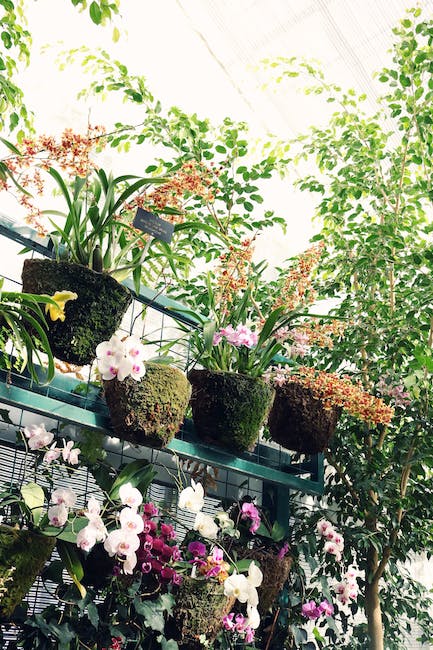Step into your garden and let the goodness grow! If you’re looking to elevate your gardening game with organic raised bed soil, you’ve come to the right place. From vibrant veggies to blooming flowers, the secret to a thriving garden lies in the quality of the soil. Get ready to dig in and discover the wonders of organic raised bed soil for your garden!
Table of Contents
- 1. Sow the Seeds of Success with Organic Raised Bed Soil
- 2. Cultivate a Bountiful Garden with Quality Soil Mix
- 3. Harvest Happiness: The Benefits of Organic Gardening
- 4. Nurture Your Plants with the Best Soil for Optimal Growth
- 5. Dig Deep: How to Create a Healthy and Thriving Garden Bed
- Q and A

1. Sow the Seeds of Success with Organic Raised Bed Soil
If you’re looking to cultivate a flourishing garden filled with vibrant blooms and bountiful harvests, then organic raised bed soil is the key to your success. Say goodbye to subpar soil and hello to nutrient-rich, organic goodness that will fuel your plants to thrive.
By opting for organic raised bed soil, you’re not only setting yourself up for a season of success, but you’re also making a positive impact on the environment. This eco-friendly approach to gardening promotes healthy soil structure, reduces the use of harmful chemicals, and supports beneficial microbes that are essential for plant growth.
With the right foundation of organic raised bed soil, your garden will be primed for success from the get-go. Enjoy the ease of planting in nutrient-dense soil that promotes root growth and moisture retention, giving your plants the best possible start on their journey to flourishing. So, roll up your sleeves, grab your gardening tools, and get ready to sow the seeds of success!

2. Cultivate a Bountiful Garden with Quality Soil Mix
Having a bountiful garden starts with the foundation – quality soil mix. A rich and fertile soil provides the essential nutrients plants need to thrive and produce abundant harvests. To cultivate a flourishing garden, make sure to invest in high-quality soil that’s full of organic matter and beneficial microorganisms.
One way to enhance your soil mix is by adding compost. Compost is like black gold for your plants, improving soil structure, retaining moisture, and promoting healthy root growth. Consider creating your own compost pile using kitchen scraps, yard waste, and other organic materials. Mix in compost with your soil to create a nutrient-rich environment for your plants to grow strong and vibrant.
Another tip is to regularly amend your soil with nutrients like nitrogen, phosphorus, and potassium. These essential elements help plants develop strong roots, produce vibrant blooms, and bear delicious fruits and vegetables. Consider using fertilizers or organic amendments to ensure your soil remains nutrient-rich throughout the growing season. With the right soil mix, your garden will flourish with an abundance of beautiful and healthy plants.
3. Harvest Happiness: The Benefits of Organic Gardening
Are you ready to reap the rewards of organic gardening and spread happiness throughout your home and community? Get your hands dirty and embrace the benefits of cultivating your own organic garden!
By choosing organic gardening methods, you are not only nourishing your body with fresh, pesticide-free produce, but also supporting a more sustainable environment. Embracing natural practices such as composting, crop rotation, and companion planting can help create a diverse ecosystem that thrives without the use of harmful chemicals.
Experience the joy of connecting with nature as you watch your garden flourish and provide a bountiful harvest of flavorful fruits, vegetables, and herbs. Share your abundance with friends and family, knowing that you are promoting health and wellness with each homegrown bite. Cultivate happiness one seed at a time in your organic oasis!
4. Nurture Your Plants with the Best Soil for Optimal Growth
When it comes to nurturing your beloved plants, choosing the right soil is crucial for optimal growth and health. The best soil is like a nutrient-rich buffet for your plants, providing them with all the essential elements they need to thrive. Whether you’re a novice gardener or a seasoned pro, giving your plants the right soil will make all the difference in their growth journey.
One of the key factors to consider when selecting the best soil for your plants is its drainage capability. Good drainage is essential to prevent waterlogging, which can lead to root rot and other plant diseases. Look for soil that is well-draining, allowing excess water to flow away from the roots easily. This will help your plants flourish and prevent any water-related issues down the line.
Another important quality to look for in the best soil is its ability to retain moisture. Plants need a consistent water supply to stay healthy and vibrant, so a soil that can hold onto just the right amount of water is key. This balance will ensure that your plants have access to hydration without being waterlogged, creating the perfect environment for them to grow and thrive.
5. Dig Deep: How to Create a Healthy and Thriving Garden Bed
Creating a healthy and thriving garden bed requires more than just throwing some seeds in the ground. To truly cultivate a vibrant and lush garden, you need to dig deep - both physically and mentally. Here are some tips to help you transform your garden bed into a haven of beauty and abundance.
First and foremost, ensure that your soil is rich and fertile. This is the foundation of a successful garden bed. Consider adding compost or organic fertilizers to provide your plants with the nutrients they need to thrive. Test the pH levels of your soil and make adjustments as necessary. Remember, happy soil equals happy plants!
Next, choose the right plants for your garden bed. Consider the amount of sunlight the area receives, the climate of your region, and the overall aesthetic you want to achieve. Create a diverse and colorful mix of flowers, vegetables, and herbs to attract beneficial insects and pollinators. Remember to space your plants appropriately to allow for air circulation and prevent overcrowding. With a little planning and care, your garden bed will soon be bursting with life and vitality.
Q and A
Q: What are the benefits of using organic raised bed soil for your garden?
A: Organic raised bed soil is filled with nutrients that will promote healthy plant growth and vibrant fruits and veggies!
Q: How can I make my own organic raised bed soil at home?
A: Mix together equal parts compost, peat moss, and vermiculite or perlite to create a nutrient-rich soil mixture for your raised bed garden.
Q: Why is it important to use organic soil in raised beds?
A: Organic soil is free from harmful chemicals and pesticides, keeping your fruits and veggies natural and safe for consumption.
Q: How often should I amend my raised bed soil?
A: It’s recommended to amend your raised bed soil with compost every season to keep your plants thriving and the soil full of nutrients.
Q: What vegetables thrive in organic raised bed soil?
A: Leafy greens like lettuce and kale, root vegetables like carrots and radishes, and vine crops like cucumbers and tomatoes all do well in organic raised bed soil.
As you prepare to cultivate your garden with organic raised bed soil, remember that you are not just growing plants – you are nurturing goodness. By choosing to prioritize the health of your soil, you are creating a vibrant ecosystem that benefits not only your plants, but also the environment and your well-being. So get your hands dirty, watch your garden flourish, and bask in the joy of growing goodness one harvest at a time. Happy gardening!



